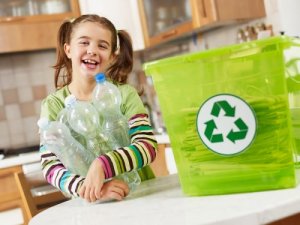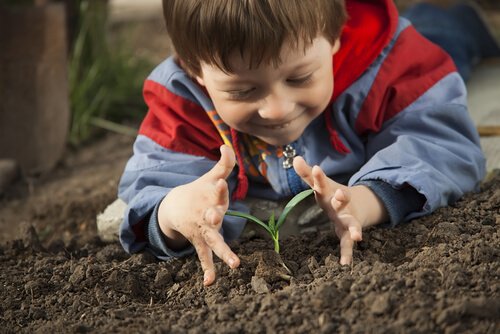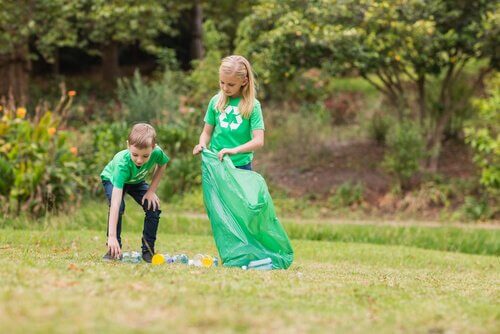Teaching Children to Respect the Environment

There are plenty of benefits to teaching your children to respect the environment. An appreciation for nature isn’t something we learn overnight. Rather, it’s a process that we need to begin when our children are very young.
Nowadays, concern for the health of the planet has been on the rise. However, we need to take action to counteract the negative effects humans have on the Earth.
Every small contribution an individual makes at home or at work leads to ecological benefits for him or herself, as well as for future generations.
If we care for the environment and demonstrate its importance to our kids, they’ll learn the importance of harmony between animals and the natural world. Helping your children learn about their surroundings is a way of educating them about life.
When children internalize how crucial the well-being of our natural spaces and animal species is, they’ll become ecologically conscious adults, spreading this conservationist message.
In addition, teaching children to respect the environment offers many personal benefits, helping them develop empathy and a sense of frugality. They learn to empathize by putting themselves in the place of the plant or animal being harmed, and they learn to save by being taught to reuse and recycle.
How to teach children to respect the environment
From a very young age, children can absorb important lessons about preserving the environment through simple activities. Put the following tips into practice at home and you’ll raise a child with eco-friendly principles and a renewable mindset.

Painting and outdoor activities
Most children love to make pictures. What better way to teach them about the environment, then, than through painting?
Take your kid to the park with a fruit basket, toys and painting supplies. Once there, you’ll have hours of quality playtime activities to enjoy. For example, you can ask your child to paint a picture of the day’s activities.
Take this opportunity to instill the importance of caring for green spaces. Tell your child that if these spaces didn’t exist, you wouldn’t have had the chance to have such a fun outing.
Making crafts and school projects with reused materials
Teach your child about the thousands of ways to reuse waste products created in the home. There are plenty of fun activities focusing on producing crafts, toys, and many other things with the the packaging we too often throw out.
Plastic bottles, aluminum cans, and cardboard tubes are excellent options for creative projects, allowing kids to make fun and useful items.
Meanwhile, homework assignments can provide the opportunity to make models that require materials like wood and plastic.
This is a great chance to reuse materials. In addition to teaching your child the value of reusable materials, you’ll provide an important lesson about frugality. Your kid will learn that it isn’t necessary to spend more money with so many options available around the house.
“Helping your children learn about their surroundings is a way of educating them about life.”
Separate materials at home to take to recycling centers
It’s likely that your town has recycling centers where citizens can take their waste products once they’ve been cleaned, dried and separated for processing.
Create a space in your home for separating recyclable materials, and ask your child to help. Once you’ve used a product, ask your child to put it in its proper place. This will offer a valuable lesson about the importance of recycling.
Once you have enough materials, take your child with you to drop them off. Make it a habitual family activity.

Watch movies that encourage us to respect the environment
There are many kid-friendly movies featuring messages about protecting the environment. These include Pocahontas, The Lion King, Wall-E and Avatar (perfect for teenagers).
Enjoy these movies with some delicious popcorn, as though you were going to the theater. Make these kinds of activities a regular occurrence in your household. They’ll make teaching your children to be eco-conscious easy and fun.
In conclusion, a child with proper ecological principles will grow into an environmentally responsible adult. This is a vital part of being human today, and will become even more important in the future.
There are plenty of benefits to teaching your children to respect the environment. An appreciation for nature isn’t something we learn overnight. Rather, it’s a process that we need to begin when our children are very young.
Nowadays, concern for the health of the planet has been on the rise. However, we need to take action to counteract the negative effects humans have on the Earth.
Every small contribution an individual makes at home or at work leads to ecological benefits for him or herself, as well as for future generations.
If we care for the environment and demonstrate its importance to our kids, they’ll learn the importance of harmony between animals and the natural world. Helping your children learn about their surroundings is a way of educating them about life.
When children internalize how crucial the well-being of our natural spaces and animal species is, they’ll become ecologically conscious adults, spreading this conservationist message.
In addition, teaching children to respect the environment offers many personal benefits, helping them develop empathy and a sense of frugality. They learn to empathize by putting themselves in the place of the plant or animal being harmed, and they learn to save by being taught to reuse and recycle.
How to teach children to respect the environment
From a very young age, children can absorb important lessons about preserving the environment through simple activities. Put the following tips into practice at home and you’ll raise a child with eco-friendly principles and a renewable mindset.

Painting and outdoor activities
Most children love to make pictures. What better way to teach them about the environment, then, than through painting?
Take your kid to the park with a fruit basket, toys and painting supplies. Once there, you’ll have hours of quality playtime activities to enjoy. For example, you can ask your child to paint a picture of the day’s activities.
Take this opportunity to instill the importance of caring for green spaces. Tell your child that if these spaces didn’t exist, you wouldn’t have had the chance to have such a fun outing.
Making crafts and school projects with reused materials
Teach your child about the thousands of ways to reuse waste products created in the home. There are plenty of fun activities focusing on producing crafts, toys, and many other things with the the packaging we too often throw out.
Plastic bottles, aluminum cans, and cardboard tubes are excellent options for creative projects, allowing kids to make fun and useful items.
Meanwhile, homework assignments can provide the opportunity to make models that require materials like wood and plastic.
This is a great chance to reuse materials. In addition to teaching your child the value of reusable materials, you’ll provide an important lesson about frugality. Your kid will learn that it isn’t necessary to spend more money with so many options available around the house.
“Helping your children learn about their surroundings is a way of educating them about life.”
Separate materials at home to take to recycling centers
It’s likely that your town has recycling centers where citizens can take their waste products once they’ve been cleaned, dried and separated for processing.
Create a space in your home for separating recyclable materials, and ask your child to help. Once you’ve used a product, ask your child to put it in its proper place. This will offer a valuable lesson about the importance of recycling.
Once you have enough materials, take your child with you to drop them off. Make it a habitual family activity.

Watch movies that encourage us to respect the environment
There are many kid-friendly movies featuring messages about protecting the environment. These include Pocahontas, The Lion King, Wall-E and Avatar (perfect for teenagers).
Enjoy these movies with some delicious popcorn, as though you were going to the theater. Make these kinds of activities a regular occurrence in your household. They’ll make teaching your children to be eco-conscious easy and fun.
In conclusion, a child with proper ecological principles will grow into an environmentally responsible adult. This is a vital part of being human today, and will become even more important in the future.
All cited sources were thoroughly reviewed by our team to ensure their quality, reliability, currency, and validity. The bibliography of this article was considered reliable and of academic or scientific accuracy.
- Barraza, L. (1998). Conservación y medio ambiente para niños menores de 5 años. Especies, 7(3), 19-23. http://ww.anea.org.mx/docs/Barraza-Natura.pdf
- Gallop, G., Sostenible, D., & Humanos, A. (2015). Medio Ambiente Y Desarrollo. 2003.
- Diputació Barcelona. El ahorro de agua doméstica. https://www1.diba.cat/uliep/pdf/49525.pdf
- Lara, J. (2008). Reducir, Reutilizar, Reciclar. Dpto. Universitario Para El Desarrollo Sustentable, Instituto de Ciencias.
This text is provided for informational purposes only and does not replace consultation with a professional. If in doubt, consult your specialist.








